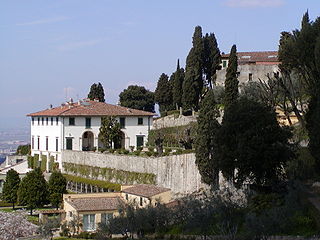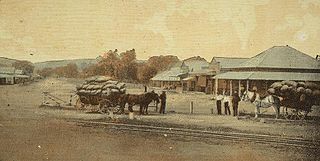
St Agnes Anglican Church, Esk is a heritage-listed churchyard at Ipswich Street, Esk, Somerset Region, Queensland, Australia. It was designed by John Hingeston Buckeridge and built in 1889 by Lars Andersen. It is also known as St Agnes Rectory and Church Hall. It was added to the Queensland Heritage Register on 21 October 1992.

Boondah is a heritage-listed detached house at 50 Howard Street, Paddington, City of Brisbane, Queensland, Australia. It was apparently designed by Richard Gailey and built c. 1907. It was added to the Queensland Heritage Register on 11 June 1993.

Pollock's Shop House is a heritage-listed general store at 617-619 Stanley Street, Woolloongabba, City of Brisbane, Queensland, Australia. It was built c. 1865. It was added to the Queensland Heritage Register on 21 October 1992.

Craigellachie is a heritage-listed detached house at 10 Fosbery Street, Windsor, City of Brisbane, Queensland, Australia. It was built c. 1889 by its owner John Grant, a stonemason. It was added to the Queensland Heritage Register on 21 October 1992.

William Grigor's House is a heritage-listed semi-detached house at 19 Gloucester Street, Spring Hill, City of Brisbane, Queensland, Australia. It was built in the late 1860s. It was added to the Queensland Heritage Register on 30 July 1993.

Hotel Metropole is a heritage-listed hotel at 253 Brisbane Street, West Ipswich, City of Ipswich, Queensland, Australia. It was designed by George Brockwell Gill and built in 1906. It was added to the Queensland Heritage Register on 21 October 1992.
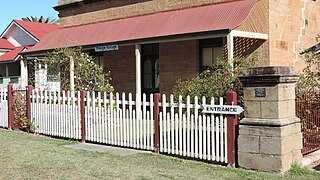
Pringle Cottage is a heritage-listed cottage at 81 Dragon Street, Warwick, Southern Downs Region, Queensland, Australia. It was built from 1860s/1870s onwards by John McColluch. It is also known as John McCulloch's Cottage, Mountview, Milton College, and Miss Lukin's Boarding School. It was added to the Queensland Heritage Register on 21 October 1992.

Ulster Hotel is a heritage-listed hotel at 25 Brisbane Street, Ipswich, City of Ipswich, Queensland, Australia. It was built in 1910. It was added to the Queensland Heritage Register on 21 October 1992.

St Michaels Nursing Home is a heritage-listed nursing home at 68 Chermside Road, Newtown, City of Ipswich, Queensland, Australia. It was built c. 1874. It is also known as Gwennap. It was added to the Queensland Heritage Register on 21 October 1992.

Ipswich Club House is a heritage-listed villa at 14 Gray Street, Ipswich, City of Ipswich, Queensland, Australia. It was designed by George Brockwell Gill and built from c. 1915 to 1916. It was added to the Queensland Heritage Register on 21 August 1992.
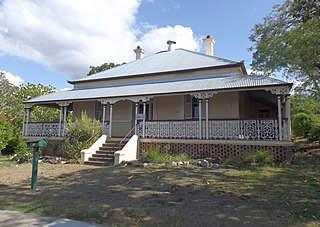
Keiraville is a heritage-listed detached house at 20 Roderick Street, Ipswich, City of Ipswich, Queensland, Australia. It was built c. 1880s. It was added to the Queensland Heritage Register on 9 July 1993.

Toronto is a heritage-listed detached house at 30 Quarry Street, Ipswich, City of Ipswich, Queensland, Australia. It was built from 1863 onwards. It is also known as Devonshire Cottage. It was added to the Queensland Heritage Register on 21 October 1992.
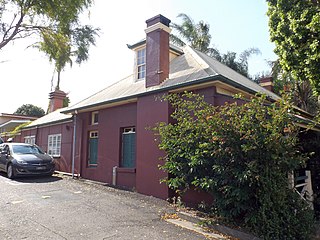
Ginn Cottage is a heritage-listed detached house at 1 Ginn Street, Ipswich, City of Ipswich, Queensland, Australia. It was built from c. 1859 to c. 1910. It was added to the Queensland Heritage Register on 21 October 1992.

Penrhyn is a heritage-listed detached house at 103 Limestone Street, Ipswich, City of Ipswich, Queensland, Australia. It was designed and built by John Farrelly c. 1879. It was added to the Queensland Heritage Register on 21 October 1992.

Idavine is a heritage-listed detached house at 2 Burnett Street, West Ipswich, City of Ipswich, Queensland, Australia. It was built c. 1910. It was added to the Queensland Heritage Register on 21 October 1992.

Notnel is a heritage-listed detached house at 6 Burnett Street, West Ipswich, City of Ipswich, Queensland, Australia. It was built c. 1863. It was added to the Queensland Heritage Register on 21 October 1992.

To-Me-Ree is a heritage-listed detached house at 7 Macalister Street, West Ipswich, City of Ipswich, Queensland, Australia. It was built c. 1910. It was added to the Queensland Heritage Register on 21 October 1992.

The Royal Bank of Queensland is a heritage-listed former bank at 12 Railway Street, Lowood, Somerset Region, Queensland, Australia. It was built from 1901 to 1917. It is also known as Bank of Queensland Ltd, National Bank of Australasia, and now as a dental surgery. It was added to the Queensland Heritage Register on 21 October 1992.

Rockhampton Courthouse is a heritage-listed courthouse at 42 East Street, Rockhampton, Rockhampton Region, Queensland, Australia. It was designed by John Hitch and built from 1950 to 1955. It is also known as District Court, Queensland Government Savings Bank, Commonwealth Bank, Magistrate's Court, Police Court, and Supreme Court. It was added to the Queensland Heritage Register on 21 October 1992.

Rockhampton Post Office is a heritage-listed former post office at 80 East Street, Rockhampton, Rockhampton Region, Queensland, Australia. It was designed by George St Paul Connolly and built from 1892 to 1896 by Dennis Kelleher. It is also known as Rockhampton Post and Telegraph Offices. It was added to the Queensland Heritage Register on 24 January 2003.

